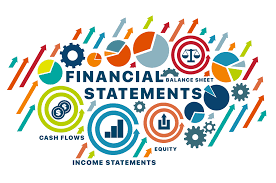 Financial statements for Statutory Audit
Financial statements for Statutory Audit
Financial statements for Statutory Audit: Here are the fundamental financial statements for Statutory audit typically subject to auditing within the context of a Furniture & Appliances Trader & Stores business:
1. Balance Sheet:
This statement presents the company’s assets, liabilities, and equity at a specific moment in time. It offers a snapshot of the company’s financial position.
2. Income Statement:
This statement displays the company’s revenues, expenses, and profits over a defined time frame. It serves as a gauge of the company’s profitability.
3. Statement of Cash Flows:
This statement reveals the company’s cash inflows and outflows during a specific period. It assists in tracking the company’s liquidity and financial stability.
4. Statement of Changes in Equity:
This statement illustrates alterations in the company’s equity over a designated period. It tracks the company’s financial performance and the impact of its actions on shareholders’ equity.
In addition to these four statements, the auditor might also scrutinize other financial statements, like the statement of retained earnings or the management discussion and analysis. The selection of financial statements to be audited depends on the company’s specific requirements and the concerns of its stakeholders.
To visit: https://www.incometax.gov.in
Here are further insights into each of these Financial statements for Statutory Audit:
1. Balance Sheet:
The balance sheet is divided into two primary parts: assets and liabilities. Assets encompass items owned by the company, such as cash, inventory, and furniture. Liabilities cover obligations of the company, such as accounts payable and loans. The equity section reflects the disparity between assets and liabilities.
2. Income Statement:
The income statement is segmented into two key segments: revenues and expenses. Revenues signify the earnings derived from the company’s sales, while expenses represent the costs associated with operating the business. Profit is the outcome of subtracting expenses from revenues.
3. Statement of Cash Flows:
This statement depicts shifts in the company’s cash balance over a specific duration. This is categorized into three sections: operating activities, investing activities, and financing activities. Operating activities encompass cash flows linked to day-to-day operations. Investing activities entail cash flows pertaining to investments. Financing activities include cash flows related to borrowings and repayments.
4. Statement of Changes in Equity:
This statement discloses modifications in the company’s equity balance throughout a particular timeframe. It is divided into two main segments: net income and other comprehensive income. Net income mirrors the profit from the income statement, while other comprehensive income encompasses non-cash elements, such as adjustments in investment values.

The audit of these Financial statements for Statutory Audit is a crucial procedure that fosters accuracy and reliability. The auditor examines the company’s financial records and processes to identify potential irregularities. Additionally, they engage in discussions with the company’s management to gain insights into the business. Following the audit, the auditor produces a report expressing their evaluation of the fairness of the financial statements.
For further details access our website: https://vibrantfinserv.com
